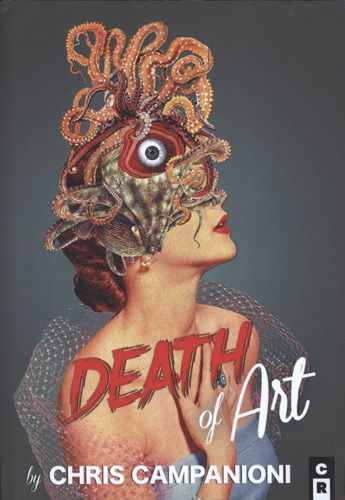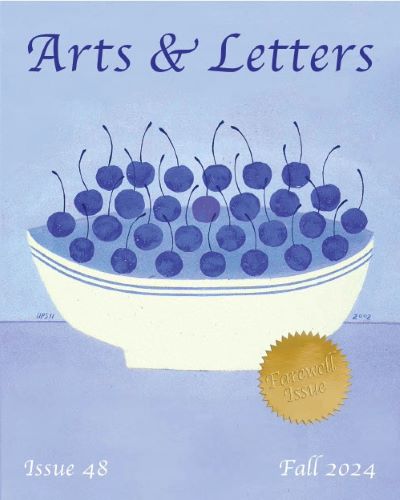Death of Art
Death of Art, 31-year-old Chris Campanioni’s memoir, is an amalgam of prose, poetry, and text messages. His name might not be familiar to you, though he’s appeared in commercials, numerous print ads and occasional acting gigs. If you look for Campanioni’s photo at the end of the book you’ll be disappointed. But fear not, there are plenty of pictures of him on the internet. Among his writing credits, Campanioni’s 2014 novel Going Down won the International Latino Book Award for Best First Book, and a year earlier he won the Academy of American Poets Prize. He teaches literature and creative writing at Baruch College and Pace University, and interdisciplinary studies at John Jay.
Death of Art, 31-year-old Chris Campanioni’s memoir, is an amalgam of prose, poetry, and text messages. His name might not be familiar to you, though he’s appeared in commercials, numerous print ads and occasional acting gigs. If you look for Campanioni’s photo at the end of the book you’ll be disappointed. But fear not, there are plenty of pictures of him on the internet. Among his writing credits, Campanioni’s 2014 novel Going Down won the International Latino Book Award for Best First Book, and a year earlier he won the Academy of American Poets Prize. He teaches literature and creative writing at Baruch College and Pace University, and interdisciplinary studies at John Jay.
The majority of Death of Art centers on his adult life, but here’s a taste of his happy early years:
We lived all of us together in a big room with a kitchen where my mother would cook & my brother & I would dance & chant, shaking a line around the table, waiting for my father to arrive & clapping when he did. [ . . . ] My mother wipes her hands on her smock & turns around to catch his gaze. The stove hums & the red rice cooker calls out to the black beans, the wooden spoon in the steel pot, the supper that awaits.
We skip to adulthood in an expressive piece called “Self-Interested Glimpses”:
I had thought that working as a model had transformed time into a circle, a cyclical exchange of repetition and recurrence. The only days that made any sense to me any longer were today and tomorrow. Everything else felt impossible to keep track of [ . . . ] But it wasn’t just my experience in the fashion industry that had changed time; it was also our culture, the technological processes we’d adopted. [ . . . ] Time as it is represented in the world of images—Selfies, Snapchats, Vines, and countless other self-interested glimpses—is instantaneous and fleeting. Quickly forgotten.
He goes on to say that the “last decade of my life has been filmed, photographed, streamed, and sold back to mass culture. I get paid for it but it isn’t just me who’s doing the buying and selling. It is all of us; it is all of our lives. [ . . . ] We are selling ourselves back to ourselves.”
The book carries a nice rhythm by interspersing poems among short essays. You could even read pages at random and not lose any of the effect. Campanioni explains the title of his book, saying it comes from “the blacked out title of a poem I’d just written called ‘Death of the Artist.’” The original poem begins:
I want you now like a TV show
It’s been so slow
This pilot season
Waiting for something good
To come on the air
Is full of eyes killing
Time [ . . . ]
The blacked out version is found after the Acknowledgements page, which normally closes off the book, but in Death of Art, additional writings follow the acknowledgements, and you don’t want to miss them.
I found that Campanioni’s essays often contain poetic passages, as when he’s talking with his agent: “[ . . . ] I tell her about the memoir I’d like her to sell. [ . . . ] Everything’s a question for something else. Don’t sell yourself, I tell myself in silence. Don’t sell yourself short, my agent tells me, except she is speaking out loud.”
And I’m unable to classify which genre several pages titled “50 First Dates (a Tinder story)” falls into, but it’s pretty amusing. Example: “My first questions usually involve music. And if they like Taylor Swift, I bury my head in the menu. And if they call her ‘T Swift,’ I go to the bathroom and never come back.”
I was drawn to the essay titled “The Nose” because instead of riffing on Nikolay Gogol’s short story of the same name, it involves a woman he calls The Nose because she creates scents in the fragrance business.
When I finished the book, I wondered how much I actually learned about Campanioni’s life. Bits and pieces stick in my mind, such as his girlfriend is named Lauren, he’s a big 90210 fan, he doesn’t shower very often, is well traveled, has a brother named John, and he gets recognized on the street a lot. I came away with mixed messages about his views on modeling and acting, but it’s pretty clear he likes teaching and loves to write.
Death of Art can be read as sheer entertainment or, with more concentration, a summary of Campanioni’s life and thoughts so far. I think he’ll have a whole lot more to say in the future, so watch for more.





